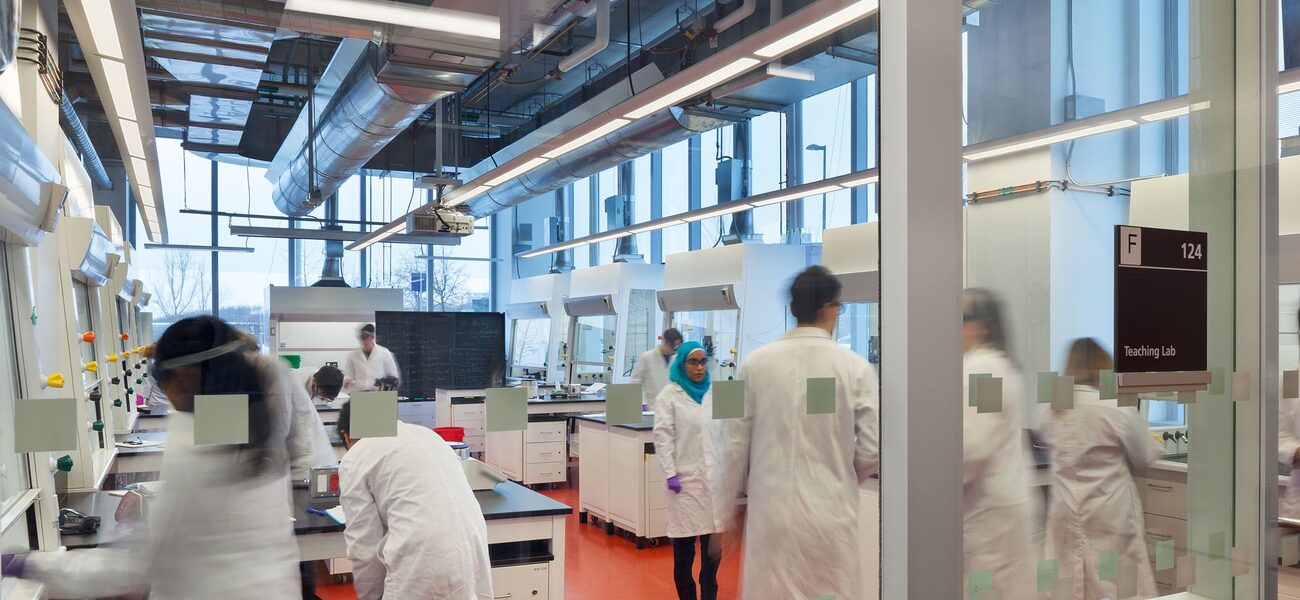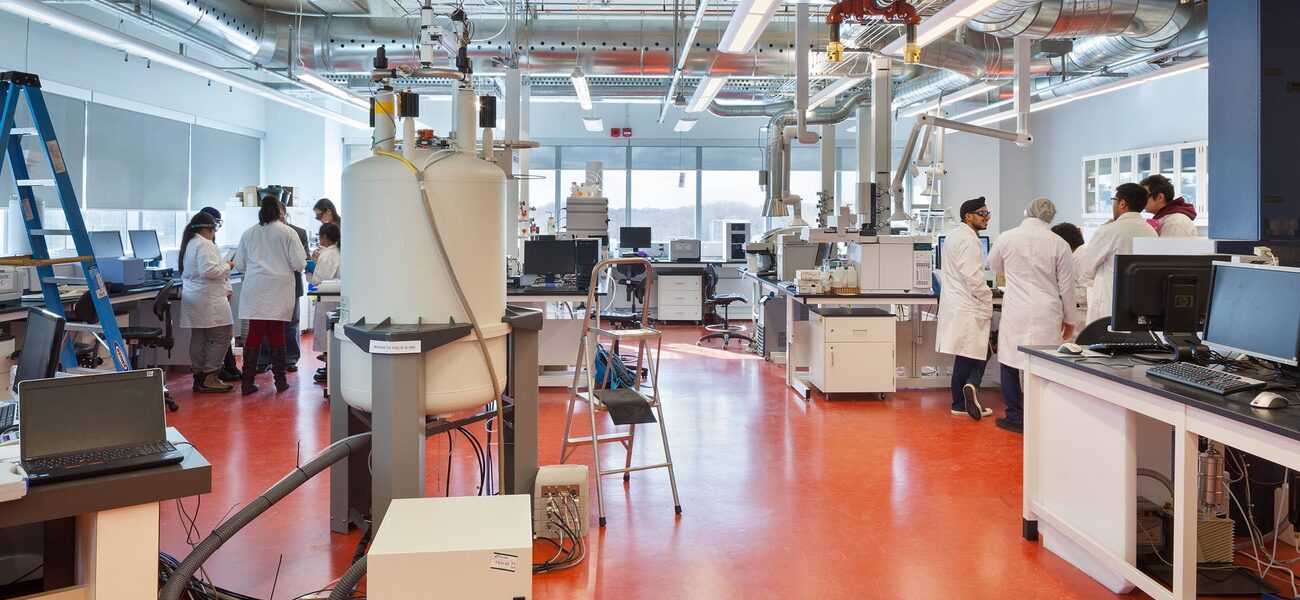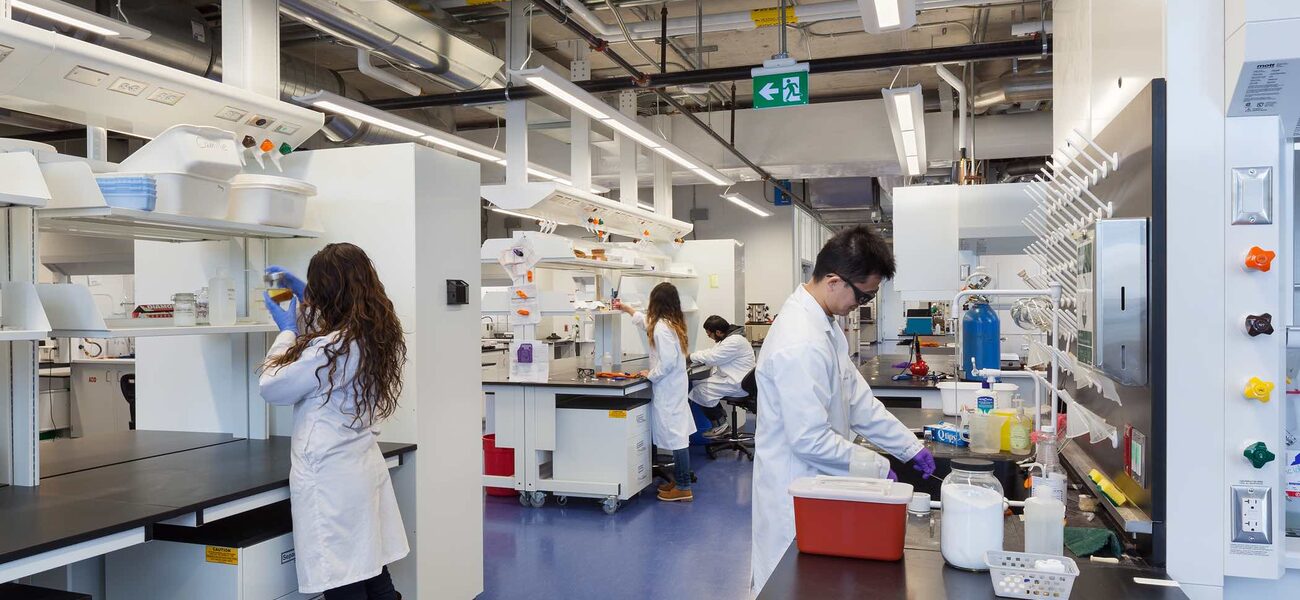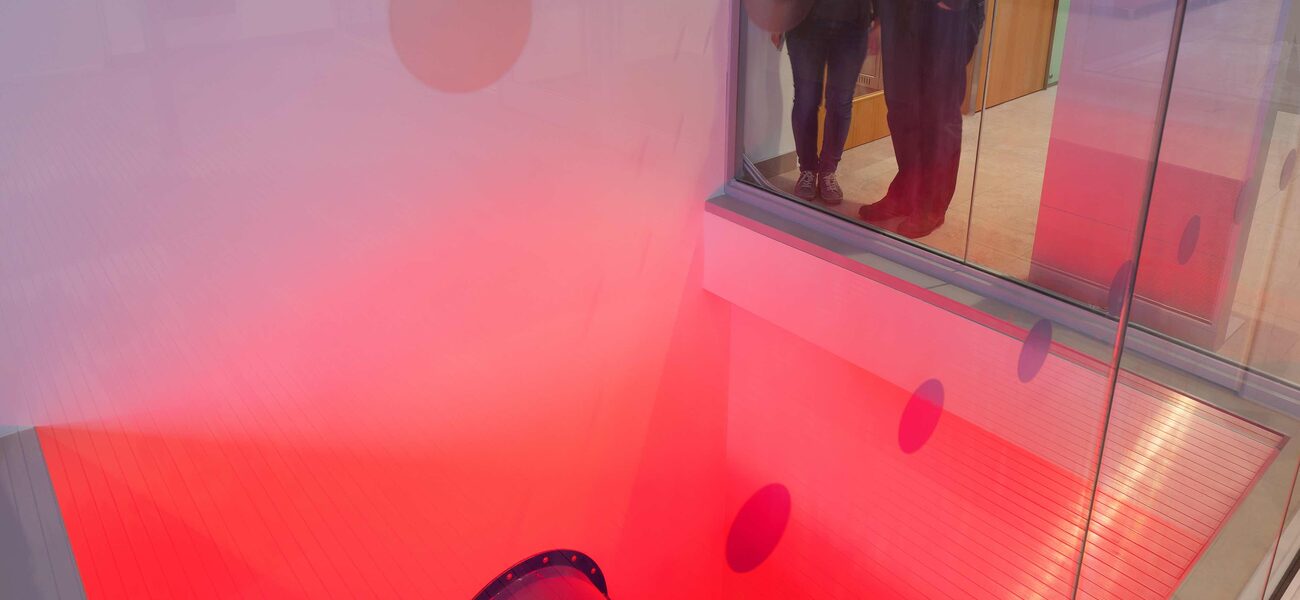The University of Toronto’s new 110,000-sf, five-story Environmental Science and Chemistry Building (ESCB), on the suburban Scarborough, Ontario, campus, provides undergraduate students and faculty with labs that feature transparency, flexibility, and adaptability, with a modular design of open, double-sided benches. Benches and associated service columns can be removed and relocated as needed, so dry lab space can be easily converted to wet lab functions without renovations. A glass partition and glass fume hoods in the ground-floor teaching labs bring natural light deep into the core of the building and establish sightlines from one lab to another.
A skylit five-story atrium and crossroads connecting the academic wing with the laboratory wing offer numerous gathering spaces for collaboration, as do the wide corridors with seating and whiteboards. Permanent support services and shared equipment—fume hoods, biosafety cabinets, radioisotope handling rooms, and temperature-controlled storage and washing areas—are centralized for access from multiple laboratories. A Nuclear Magnetic Resonance spectrometer is housed in the Teaching and Research in Analytical Chemical and Environmental Science (TRACES) Instrumentation Lab. Glazed tech offices and teaching assistant rooms are located adjacent to both the teaching and research lab areas to facilitate group discussions.
The building is tracking LEED Gold certification. Sustainability features include geothermal heating and cooling, stormwater capture and recycle, a green roof, LED lighting throughout, and a high-performance building envelope with unique fritted glazing to minimize solar heat gain. An array of vertical sunshades of varying depths spans the south and west façades to mitigate the intensity and glare of the sun on the interior.
Six stainless steel cylindrical intake shafts reveal the geothermal system carrying air that is tempered underground to significantly reduce the energy costs associated with heating and cooling. As part of an integrated learning component, one of the earth tubes has a translucent portion that passes under the entrance vestibule, where an information kiosk explains the technology. A glass screen and floor opening permit students to see the earth tube in action; wind deflectors and colored LEDs are integrated to illustrate the air movement within the tube.
| Organization | Project Role |
|---|---|
|
Diamond Schmitt Architects
|
Architect
|
|
EllisDon
|
Construction Manager
|
|
Read Jones Christofferson
|
Structural Engineer
|
|
Smith + Andersen
|
Mechanical/Electrical Engineer
|
|
MMM Group Ltd.
|
Civil Engineer
|
|
Footprint
|
Energy Model
|
|
RWDI
|
Environmental Engineer
|
|
HGC Engineering
|
Acoustic Engineer
|
|
EllisDon
|
LEED Consultant
|
|
Siemens
|
Building Automation System/Controls
|
|
Honeywell
|
Security
|
|
MOTT Lab
|
Lab Case Work and Fume Hoods
|
|
Labworks International Inc.
|
Controlled Environment Rooms (Cold Rooms)
|
|
Getinge Group
|
Sterilizers
|
|
KONE Inc.
|
Elevators
|



